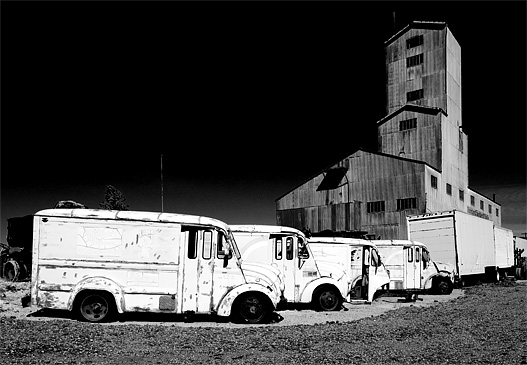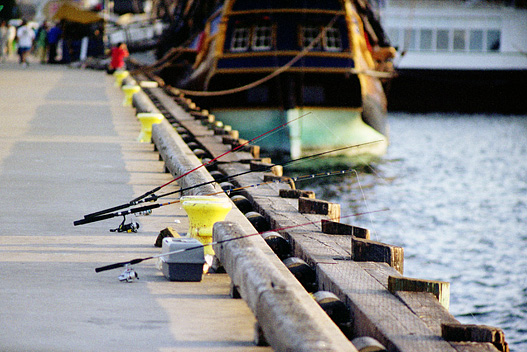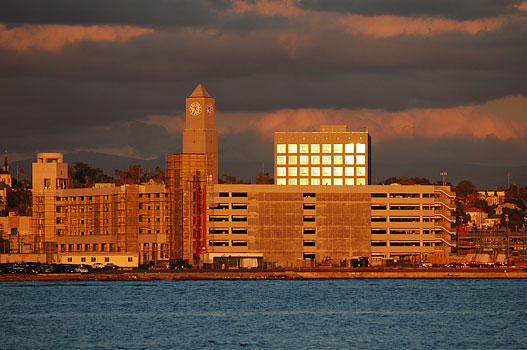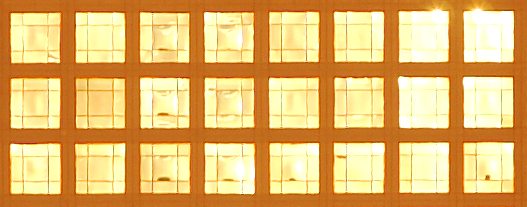
|
|||||||
| The Photo Circle Our brand spanking new forum to discuss and ask questions about anything related to photography. Also share you pictures and talk about creative works. |
 |
|
|
Thread Tools | Rate Thread | Display Modes |
|
#1
|
|||
|
|||
|
Though the word ?rhythmics,? or the study of rhythm, may be unfamiliar, the concept that it represents is all around us. Before we dive into rhythmics in photography let?s examine how it applies to other creative disciplines.
?The Elements of Style? by William Strunk Jr. and E.B. White has long been considered a definitive guide on writing. Among several elementary principles of composition described in the book, the principle of parallel construction dictates to express coordinate ideas in similar form: ?The likeness of form enables the reader to recognize more readily the likeness of content and function.? To even greater extent we can observe rhythmics in music. Pretty much every melody worth listening to is composed of various repeating patterns. Even if you are not a musician, chances, you can easily tell the difference between, for example, reggae and tango, because of distinctive beats these musical styles carry. Tango is a musical style and a dance. In many dancing performances we can see rhythmics working on multiple levels. The dancers follow the beat of the music, and often multiple dancers perform moves in sync, such as in various types of folk dancing, or the kind of dancing you can see performed behind the lead singer at a popular music concert. The influence of rhythmics in fine art is enormous. In sculpture, consider the Ahu Akivi installations on Easter Island or the Chinese Terracotta Army. In paintings, consider works of Salvador Dali or Abel-Truchet Louis. Take a quick look at Dali?s 1936 work titled ?On Paranoic Critical Town.? You will find may repeating shapes: the dancing girl and the bell in the tower, the safe cabinet keyhole and the figure at the end of the street, and many, many more just in that one painting. Now, let?s explore how the concept of rhythmics can be applied to photography. First, you can take an image, and mechanically replicate it several times to reach desired effect. Marilyn Monroe, 1962, screen print by Andy Warhol is an excellent example of such approach. Here is what Dana Arnold, former editor of the Art History journal, and author of many books on art history, writes about this artwork: Quote:
Let?s examine the ?Milk Trucks? picture below that was taken at the Motor Transport Museum in Campo, CA. You will immediately notice that visually you are grasping the group of trucks as a whole, not as individual vehicles. This happens because they are similar. The four old milk trucks are lined up in predictable fashion, they are of the same model, and they lit similarly (in fact, the trucks are the brightest and most contrast objects in the picture).  The basic principle of rhythmics in photography is, look for similar objects and express them similarly. You don?t have to use rhythmics in every picture you take, but rhythmics is a very valuable tool that can have prominent role in your artworks, or it can support the main idea as demonstrated by the next picture, ?Fishing at the Port.? This picture, taken for The International Library of Photography ?Eternal Impressions? collection, symbolizes a simple moment of piece and quiet in our hectic lives where time never stops.  Notice, how fragile the fishing poles and fishing lines look against thick beams of the pier. You can see repeating patterns everywhere in the picture, from prominent pier cleats and pilings to subtle arrangements of windows of the boats on the background; and yet, the patterns do not distract from the main idea but amplify it. Low setting sun creates wide shadows on the pavement on the left site of the picture. All together going forward, the shadow strips represent a road in time that we are traveling. The shadows are interrupted by thin ribbons of light, just like our lives are interrupted by little moments that are worth to enjoy and remember. Train your eye to see rhythmics and you will learn to capture what you see: if you can imagine it ? you can express it. Rhythmics is all around us: telegraph poles; railroad ties; creosote brush bushes in the desert are spaced randomly, but if you can find an arrangement that has an order to it, you can create a very powerful statement. Visual rhythmics is very dominant in architecture. Consider the next picture with across-the-bay view of the watchtower and buildings in the vicinity of the San Diego Trolley 12th and Imperial Transit Center.  The picture is nice; however observe what happens when we crop a part of the building with sunlit windows to produce the following image.  The raging, front-plan, in your face rhythmics creates an image that is much more artsy-fartsy than the original picture. Whether you have been using rhythmics in your photographic works for long time or just starting with this concept, I hope you found this little article useful, and gained some new ideas that you are itching to implement. Have fun taking pictures. Sergey Copyright 2007, Sergey Nosov. All rights reserved. |
 |
| Bookmarks |
|
|
 Similar Threads
Similar Threads
|
||||
| Thread | Thread Starter | Forum | Replies | Last Post |
| Any good basic teach yourself photography books? | speaceman | The Photo Circle | 9 | 07-09-2007 08:35 PM |
| Another photography question | dennisuello | The Photo Circle | 3 | 11-06-2006 11:00 AM |
| Campo Excursion and Photography Workshop | TObject | The Photo Circle | 15 | 11-01-2006 02:07 PM |
| Jeep Photography | JMyerz | Jeep Friends Forum | 6 | 01-05-2004 10:45 AM |